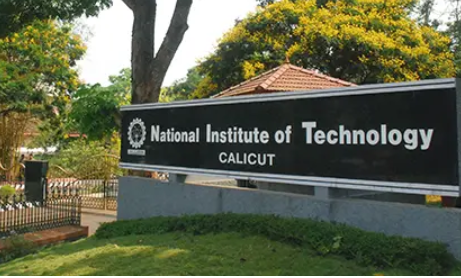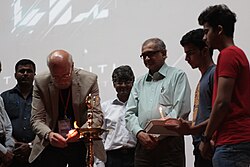Blog Credit : Trupti Thakur
Image Courtesy : Google
The ‘Nivahika’ Web Portal By NIT Calicut
The National Institute of Technology-Calicut (NIT-C) has launched a new web portal called ‘Nivahika’. This portal is designed to change how the institute handles and reports data. According to the director, Prasad Krishna, Nivahika will improve the accuracy and consistency of the institute’s data submissions and help with national rankings.
Overview of Nivahika
Nivahika is a tool that helps collect, organize, and report data more effectively across different departments and research centers at NIT-C. The Dean’s (Planning & Development) office led the development of the portal, with help from several other departments like the Centre for Information Technology, Research and Automation, Computer Networking Centre, and the Central Computer Centre. The portal helps keep track of important activities and provides timely access to crucial data. This makes it easier to run operations smoothly and make better decisions.
Security and Access
Nivahika is designed to be secure. Only authorized people like the Director, Registrar, deans, department heads, and center chairpersons can access it through personalized accounts. One of the key features of Nivahika is that it can automatically generate reports. This is a big improvement in how NIT-C manages its data and boosts overall efficiency.
About National Institute of Technology-Calicut
- Established in 1961, the National Institute of Technology-Calicut (NITC) is a leading engineering school in India, originally set up as a Regional Engineering College.
- The campus spans 300 acres and features a large 6000-seat auditorium. NITC offers undergraduate and postgraduate programs in various engineering disciplines.
- The institute is renowned for its successful alumni, notable research in renewable energy and materials science, and strong international collaborations.
National Institute of Technology Calicut (NIT Calicut or NITC), formerly Regional Engineering College Calicut, is a public technical university and an institute of national importance governed by the NIT Act passed by the Parliament of India. The campus is situated 22 kilometres (14 mi) north east of Kozhikode, on the Kozhikode–Mukkam Road. It was established in 1961 and was known as Calicut Regional Engineering College (CREC) until 2002. It is one of the National Institutes of Technology campuses established by the Government of India for imparting high standard technical education to students from all over the country. NIT Calicut hosts a supercomputer on its campus, and has a dedicated nanotechnology department.
History
Initial years
National Institute of Technology, Calicut was set up in 1961 as Regional Engineering College Calicut (CREC), the ninth of its kind and the first one to be established during the Third Five-Year Plan period. Until the formation of Calicut University in 1963, the institute was affiliated with Kerala University. It was largely due to the efforts of Pattom Thanu Pillai, then Chief Minister of Kerala, that the institute came into being. Prof. S. Rajaraman, first principal of Government Engineering College, Thrissur was appointed as the special officer in 1961 to organise the activities of the college until M. V. Kesava Rao took charge as the first principal of the college. The classes were initially held at the Government Polytechnic at West Hill, before it moved to its present campus in 1963. The college started with an annual intake of 125 students for the undergraduate courses, on a campus of 120 hectares (1.2 km2; 300 acres).
Expansion
The undergraduate courses’ intake increased to 250 in 1966, 150 for the first year, and 100 for the preparatory course. The annual intake was reduced from 250 to 200 from the year 1968–69 on account of the industrial recession.
After Prof S. Unnikrishnan Pillai took charge as principal in 1983, the Training and Placement Department was started to organise campus recruitments for students. The college moved into the area of information technology in 1984 with the commissioning of multi-user PSI Omni system and HCL workhorse PCs. In 1987 the college celebrated 25 years of its existence, and postgraduate courses were started. The CEDTI was established on the campus the following year.
In 1990 Shankar Dayal Sharma inaugurated the Architecture Department Block and construction of a computer centre was completed. In 1996, the institute website (the first in Kerala) was launched. The Indian Institute of Management Calicut functioned from the NIT campus in its first few years of existence before moving to its new campus in Kunnamangalam in 2003.
The Ministry of Human Resource Development, Government of India, accorded NIT status to REC Calicut in June 2002 granting it academic and administrative autonomy. It was a lead institute under the World Bank-funded Technical Education Quality Improvement Programme (TEQIP) which began in 2002. In 2003, students were first admitted to the flagship undergraduate B.Tech through the All India Engineering Entrance Exam. With the passing of the National Institutes of Technology Act in May 2007, NIT Calicut was declared an Institute of National Importance. The National Institutes of Technology Act is the second legislation for technical education institutions after the Indian Institutes of Technology Act of 1961. In 2007 NIT Calicut raised its annual intake for its undergraduate programme to 570. The annual intake for the undergraduate programme was increased to 1049 by 2011.
Blog By : Trupti Thakur

05
AugThe ‘Nivahika’
Aug 05, 2024Recent Blog
Quantum Gravity Gradiometer PathFinderApr 28, 2025
The TechKriti 2025Apr 26, 2025
India’s First Quantum Computing VillageApr 24, 2025
India’s Achievement In QKDApr 22, 2025
The V2G TechnologyApr 21, 2025




